Lorenza Bacino goes beyond the city’s obvious attractions to discover five things to see and do in Padua that will make any visit extra-special…
Photos by Lorenza Bacino unless otherwise stated
Padua is often overlooked by travellers in favour of the more famous Veneto cities of Venice and Verona, yet this pretty city between Venice and the Euganean Hills is a thriving economic and cultural centre with plenty to offer visitors.
The city centre is rich in Medieval and Renaissance art and architecture, and the city has plenty more besides. Not only does Padua stand in the largest thermal basin in Europe, it is also home to one of the continent’s oldest and most prestigious universities, and it is perfectly located for sojourns into the Euganean Hills. Here are four top things to enjoy when you visit…
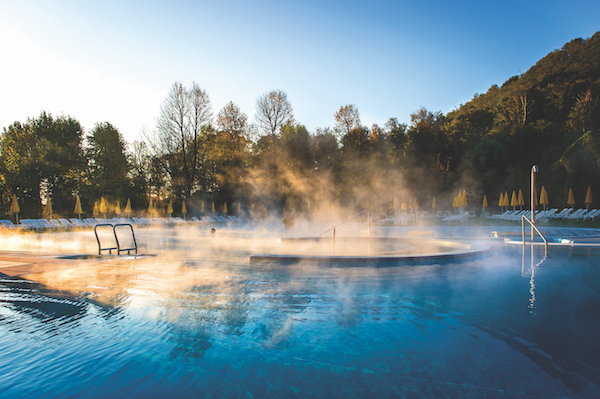
1 The Prehistoric Baths
Padua is a city of tremendous culture and beauty, but I must admit that the day I spent bathing in the steamy waters of the Terme Preistoriche (Prehistoric Baths) at Montegrotto Terme, just to the southwest of the city, was definitely a highlight of my short stay.
Don’t worry, the Prehistoric Baths aren’t actually prehistoric at all – though the water certainly is. This area at the foot of the Euganean Hills is part of the largest thermal basin in Europe, and the Hotel Terme Preistoriche lies within 22,000 square metres of beautiful parkland at the heart of it.
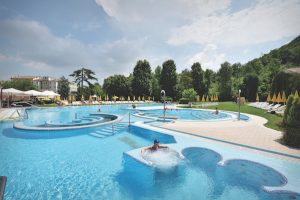
There are both indoor and outdoor areas here, so it’s great to visit all year round and in all weathers. Choose from a variety of wellness packages, including sauna, hydro-massage, Turkish baths and more. Sun loungers and umbrellas surround the outdoor pool, but when it’s chilly there’s an open fire inside and a comfortable reading and relaxing area where you can also play chess or order a drink or snack at the bar.
At dusk, the pool area is illuminated and the atmosphere here becomes especially relaxing. Just watching the sun set over the hills while you are immersed in the waters is one of the most luxurious and soothing ways to spend any evening. Definitely an experience not to be missed while you’re in the area.
Find out more about the Prehistoric Baths at their website here.
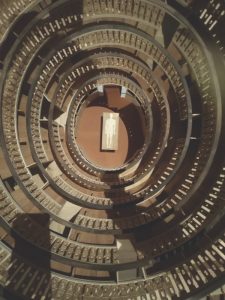
2 The historical seat of the University of Padua
The University of Padua is the most prestigious medical school in Italy and the second oldest university in the country, after Bologna. The city of Padua was already a major centre of learning, but the university was officially founded in 1222 by professors and students from Bologna who had come to feel that their intellectual freedom there had become compromised.
The new University of Padua soon gained an international reputation for its free-thinking ethos and religious tolerance, and this was a reputation it would hold for centuries, even through the 16th, when most other universities in Italy were deeply conservative places where, for one thing, students had to be Catholic in order to graduate.
In Padua, by contrast, and true to the University’s founding tenets, Jews and Protestants were free to confess their faith. The University of Padua can also lay claim to have awarded the degree to Europe’s first female graduate, Elena Lucrezia Cornaro Piscopia, who took a doctorate here in 1678. Her statue is proudly displayed.
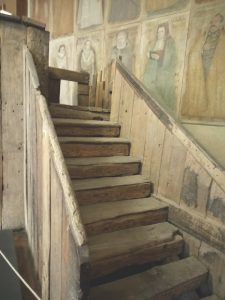
The guided tour of the Palazzo Bo, which is the historical seat of the university, begins in the Aula Magna (the ‘Great Hall’). Designed by the architect Andrea Moroni, this amazing Renaissance palazzo is decorated to the ceiling with the coats of arms of students from as far back as 1592.
Galileo Galilei spent 18 years teaching here (1592-1610) and his roughly-constructed podium also remains on display. Apparently, he was so short that the students, who turned up in their hundreds to hear him speak, couldn’t see him, so they took it upon themselves to construct the wooden podium for him to stand on to deliver his lectures.
The tradition of freedom of intellectual thought still holds true for the Padua University of today – though there is also a dark side of the university’s history to learn about on the tour: how corpses were brought here from Venetian prisons by candlelight for the purposes of autopsies that were conducted under cover of darkness.
Find out more about visiting the university and book a tour here.
3 Luxardo Spritz
Did you know that Padua is where the now trendy Aperol Spritz was created, by Silvio Barbieri back in 1919. But in 2003, the brand was bought by multinational Campari. So, in true rebellious Padua style, the Gran Caffè Diemme in the central Piazza dei Signori decided to make the spritz using a locally sourced aperitivo called Luxardo, to support local business. It tastes just as good – so who knows when the Luxardo spritz will take off internationally! Make sure you give it a go when you visit!
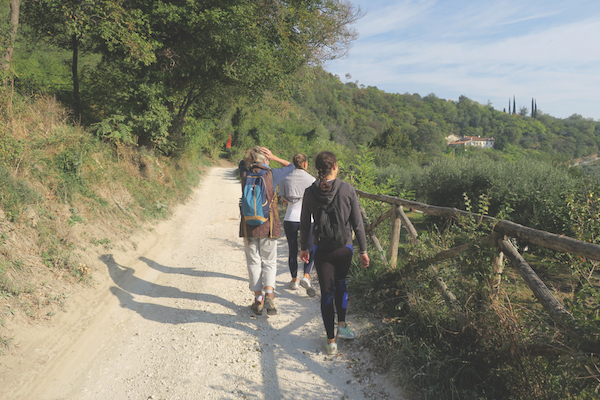
4 Walking the Euganean Hills
“To know a place, you have to walk it,” says Charlotte Whigham, long-term Padua resident and Euganean Hills aficionado. She took me on a wonderful ‘taster’ walk in her beloved hills, along with a couple of students who wanted to practise their English. We walked a part of the Monte Fasolo trail, beginning at Battaglia Terme, a 15 kilometre drive from Padua, before heading to Valle San Giorgio and Monte Gemola in the heart of the hills.

At the very top sits the beautiful Villa Beatrice d’Este, which dates from around 1200 AD. A cobbled tree-lined walled path leads to the entrance of the ancient Benedictine monastery, which has a wonderful stone lion and coat of arms dating to the same era adorning its gateway. Within is housed a small yet atmospheric museum and a café, while in the surrounding gardens you’ll see persimmon trees, almonds, chestnuts, violets and more. Charlotte has an in-depth knowledge of the flora and fauna of these hills and loves to tell you anecdotes and stories she has picked up over the years.
We meandered through vineyards replete with fruit trees, hills and woodlands where we found many places to stop for a bite to eat and a glass of local wine. Wild boars and bikes are your greatest danger, and evidence of the boars could be seen when we stumbled across their mud baths in the woods.
There are more than 100 hills in the area, with 200 trails of varying degrees of difficulty covering about 25 square kilometres. Well worth visiting is the Villa dei Vescovi in Luvigliano, and there’s an interesting archaeological museum at the foot of nearby Monte Cinto. Not much further south lies Arquà Petrarca, a largely intact medieval village where the Renaissance poet Francesco Petrarca penned his sonnets to his beloved Laura.
For more: charlotte.whigham@gmail.com
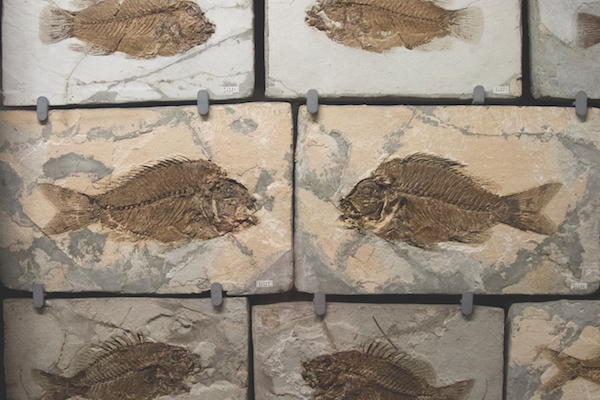
5 The university museums
The exquisite Palazzo Cavalli, with its grand frescoed rooms, is the first museum you should visit. Built between the end of 14th century and the beginning of the 15th, it now houses geology and palaeontology collections acquired over three centuries. Not to be missed are the breathtaking fossilized exotic plants and Ice Age relics.
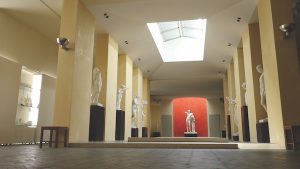
There are another 10 university museums dotted in and around the city, containing rich and eclectic collections ranging from otherworldly prehistoric marine animals dating back hundreds of millions of years to ancient instruments used for the teaching of astronomy, physics and mathematics.
The botanical collections include 600,000 seeds, pods and plants from all over the world; the geographical collections focus on exploration and discovery from 1800 to the present day. On display are beautiful maps, globes, photos and other artefacts to pique your curiosity. A visit to the Archaeology and Art Museum with its ancient statues, heads and busts displayed in truly stylish surroundings is well worth the effort. If you have time to venture out of town to Asiago, there’s also the Astronomy Museum, which, when it was inaugurated, in 1942, housed the largest telescope in Europe.
For more information click here.
Where to eat & drink
Donna Irene
The Ristorante Enoteca Donna Irene stands in a nice location under a bridge and offers relaxing music and great food and wine. We enjoyed a delicious shrimp and bacon soup here, while our host Ubaldo, who is from Sicily, was happy to recommend the wine. (Closed on Tuesdays.)
Vicolo Pontecorvo, 1 – 35100 Padova
E-Noteca di Donna Irene
Donna Irene also sells wine from their E-noteca, and can ship to anywhere in the world. The website doesn’t do the service they provide justice, so do email.
Via Umberto I, 89 – 35123 Padova
posta@e-noteca.it
Trattoria Pizzeria Liviana
After our walk with Charlotte in the Euganean Hills, we stopped to eat at Trattoria Pizzeria Liviana. Here we enjoyed locally-sourced mushroom pasta on the outside terrace with gorgeous countryside all around us. (NB – lke Donna Irene, they are closed on Tuesdays.)
Via Tito Livio, 2 – 35038 Torreglia
Zairo
I loved the fake Roman and Greek statues decorating the huge, centrally-located Zairo restaurant – and the traditional fish dishes they serve here are great too. You also get a magnificent view across the Prato della Valle. In between courses, do cast your eye around the walls to take a look at the frescoes – in particular the two griffons on a coat of arms dating back to 1673.
Prato della Valle, 51 – 35135 Padova
Getting there
Treviso and Verona airports are not too far away, but Venice is best option to fly into. The shuttle bus from Marco Polo airport into central Padua takes around 30-40 minutes.
For more Padua travel inspiration, check out Sara Scarpa’s 48 hours in Padua
